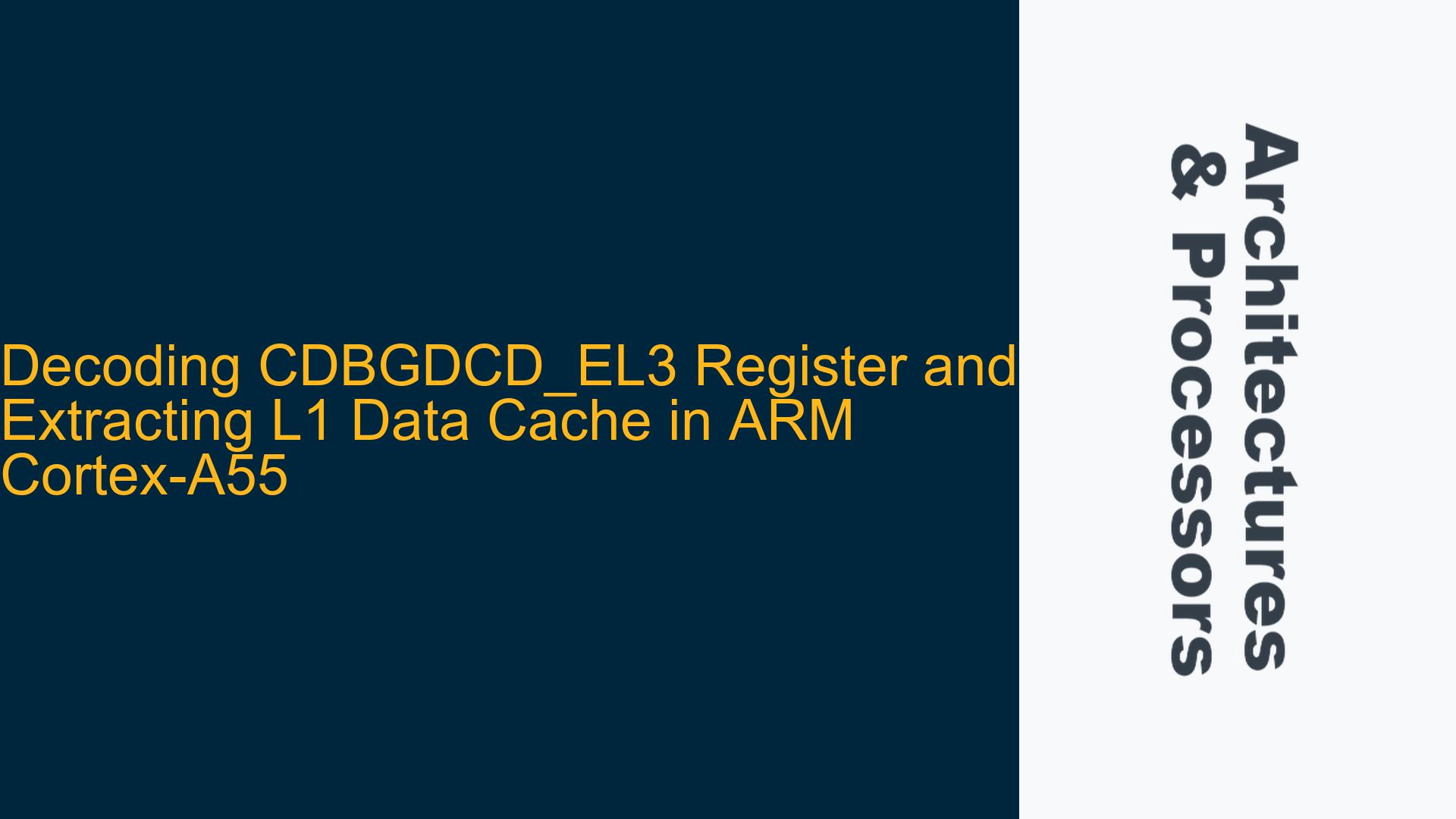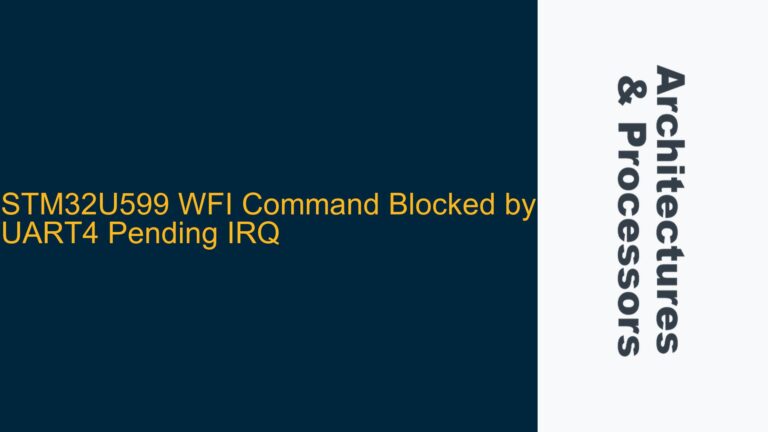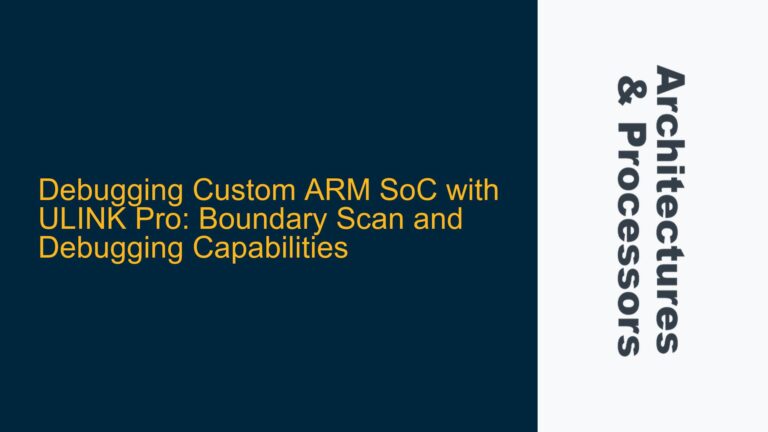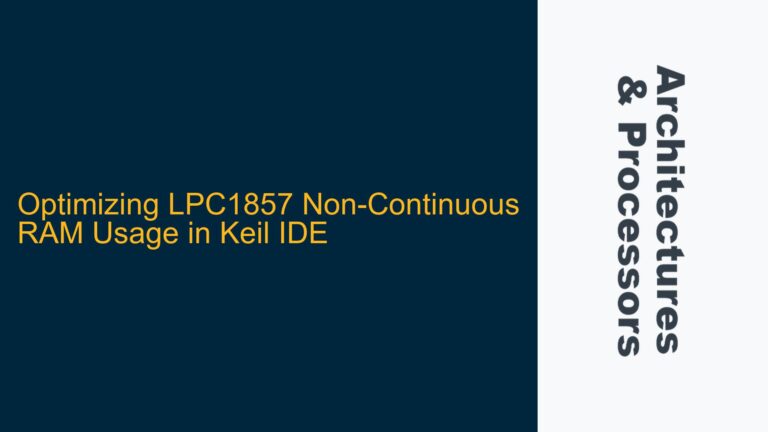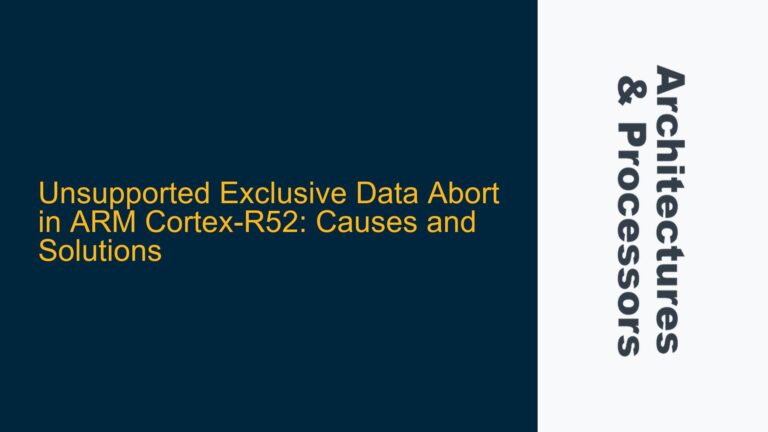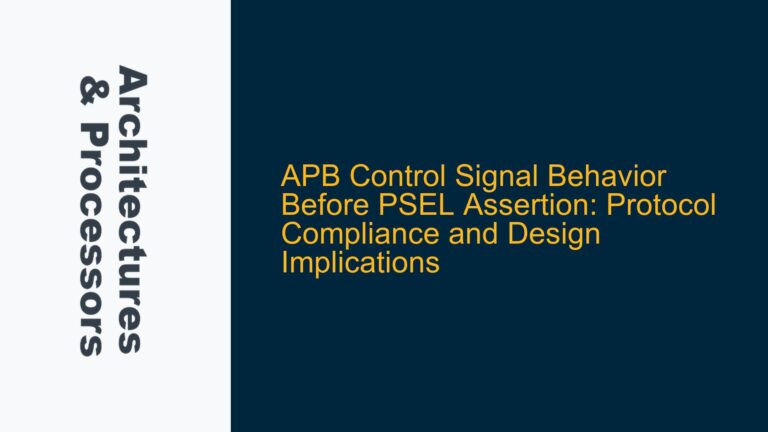Understanding CDBGDCD_EL3 Register Encoding and L1 Data Cache Extraction
The ARM Cortex-A55 processor provides a mechanism for direct access to internal memory, including the L1 Data (L1D) cache, through the use of debug registers. Specifically, the CDBGDCD_EL3 register is used to select a particular cache line by encoding the index, set, and way information. Once the cache line is selected, the data can be read out using the CDBGDR0_EL3 to CDBGDR3_EL3 registers. However, the process of encoding the index, set, and way into the CDBGDCD_EL3 register and extracting the full 64-byte cache line using only 32 bytes of read capacity per access can be complex and requires a deep understanding of the ARM architecture.
The L1D cache line in the Cortex-A55 is 64 bytes in size, but the debug data registers (CDBGDR0_EL3 to CDBGDR3_EL3) can only read out 32 bytes at a time. This discrepancy raises questions about how to properly encode the CDBGDCD_EL3 register to select a specific cache line and how to handle the extraction of the full 64-byte cache line using the available 32-byte read capacity.
Encoding Index, Set, and Way in CDBGDCD_EL3 Register
The CDBGDCD_EL3 register is used to specify the cache line to be accessed by encoding the index, set, and way information. The encoding of these fields is critical to correctly selecting the desired cache line. The index, set, and way are used to uniquely identify a cache line within the L1D cache.
The index field in the CDBGDCD_EL3 register specifies the cache line within a particular set. The set field identifies the specific set within the cache, and the way field specifies the way within the set. The exact encoding of these fields depends on the cache configuration, including the cache size, associativity, and line size.
For example, in a 4-way set-associative cache with 64 sets and a 64-byte line size, the index field would need to be wide enough to address all 64 cache lines within a set. The set field would need to address all 64 sets, and the way field would need to address all 4 ways. The exact bit positions and widths of these fields in the CDBGDCD_EL3 register can be found in the ARM Architecture Reference Manual, specifically in sections 6.7.2, 6.7.3, and 6.7.4.
The encoding of the index, set, and way fields must be done carefully to ensure that the correct cache line is selected. Any misalignment or incorrect encoding could result in accessing the wrong cache line or corrupting the cache data.
Extracting 64-Byte Cache Line Using 32-Byte Read Capacity
Once the CDBGDCD_EL3 register is properly encoded to select the desired cache line, the next challenge is extracting the full 64-byte cache line using the CDBGDR0_EL3 to CDBGDR3_EL3 registers, which can only read out 32 bytes at a time. This requires a two-step process to read out the entire cache line.
The first step is to read the first 32 bytes of the cache line using the CDBGDR0_EL3 and CDBGDR1_EL3 registers. These registers are used to read out the lower 32 bytes of the cache line. The second step is to read the remaining 32 bytes using the CDBGDR2_EL3 and CDBGDR3_EL3 registers, which are used to read out the upper 32 bytes of the cache line.
To ensure that the entire 64-byte cache line is read correctly, it is important to maintain the correct sequence of operations. The CDBGDCD_EL3 register must be set to the correct index, set, and way before reading the data registers. Additionally, the data registers must be read in the correct order to ensure that the data is not corrupted or misaligned.
In some cases, it may be necessary to use memory barriers or cache maintenance operations to ensure that the cache line is properly synchronized before reading the data. This is particularly important in multi-core systems where cache coherency must be maintained.
Troubleshooting Steps and Best Practices for CDBGDCD_EL3 and Cache Data Extraction
When working with the CDBGDCD_EL3 register and extracting data from the L1D cache, there are several troubleshooting steps and best practices that can help ensure successful operation.
First, it is essential to carefully review the ARM Architecture Reference Manual, specifically sections 6.7.2, 6.7.3, and 6.7.4, to understand the exact encoding of the index, set, and way fields in the CDBGDCD_EL3 register. Misencoding these fields can lead to incorrect cache line selection and data corruption.
Second, when reading the cache line data using the CDBGDR0_EL3 to CDBGDR3_EL3 registers, it is important to follow the correct sequence of operations. The CDBGDCD_EL3 register must be set before reading the data registers, and the data registers must be read in the correct order to ensure that the full 64-byte cache line is extracted correctly.
Third, in multi-core systems, it may be necessary to use memory barriers or cache maintenance operations to ensure that the cache line is properly synchronized before reading the data. This can help prevent issues related to cache coherency and ensure that the data read from the cache is accurate and up-to-date.
Finally, it is important to test the cache data extraction process thoroughly to ensure that it works correctly under all conditions. This may involve writing test cases that exercise different cache configurations and scenarios, such as cache line replacement, cache eviction, and cache coherency in multi-core systems.
By following these troubleshooting steps and best practices, developers can ensure that they are able to correctly encode the CDBGDCD_EL3 register and extract data from the L1D cache in the ARM Cortex-A55 processor. This will help avoid common pitfalls and ensure reliable operation of the system.
Conclusion
The CDBGDCD_EL3 register plays a critical role in accessing the L1 Data cache in the ARM Cortex-A55 processor. Properly encoding the index, set, and way fields in this register is essential for selecting the correct cache line, and understanding how to extract the full 64-byte cache line using the 32-byte read capacity of the CDBGDR0_EL3 to CDBGDR3_EL3 registers is key to successful data extraction.
By carefully following the encoding guidelines, maintaining the correct sequence of operations, and using memory barriers or cache maintenance operations where necessary, developers can ensure that they are able to reliably access and extract data from the L1D cache. Thorough testing and adherence to best practices will further help to avoid common issues and ensure the correct operation of the system.
In summary, the process of working with the CDBGDCD_EL3 register and extracting data from the L1D cache requires a deep understanding of the ARM architecture and careful attention to detail. By following the guidelines and best practices outlined in this post, developers can successfully navigate the complexities of cache access and data extraction in the ARM Cortex-A55 processor.
